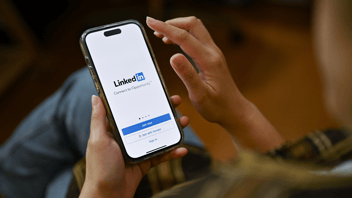Just Finished Your Interview? Here's How You Should Follow Up
What’s the best way to follow up after a job interview?
Many candidates may think their work is done after the interview, and now it's time to wait.
But don’t sit idle. There are a few best practices to follow up after a job interview that will boost your chances of getting hired. The experts at Inova Staffing have outlined what to include in your message—and how.
When do you send a follow-up after an interview?
Before you ask—yes, you should always send a follow-up note. A best practice is to send an email within the 24-48 hours following your interview. This message acts as a reminder of your interview (and you) and gives you an opportunity to further express your interest in the position. You may be one of hundreds of candidates applying to the job, so sending a follow-up message can set you apart from the rest.
If you have not heard back after your first follow-up, you can send another note seven to 10 days later to confirm receipt of the first email. Chances are they aren't ignoring you; they may have simply missed the first email.
Remember not to get discouraged. If you send a message or two and don't hear back, it may be time to move on. Use this opportunity to refine your resume to showcase your best self.
What should you include in your follow-up message?
Knowing what to include in a follow-up email is important to show your enthusiasm and professionalism. Our experts outline the keys to a great follow-up message below. These best practices will help you make a lasting impression:
- Subject line
- Introduction
- Body text
- Signature
Subject line
Your subject line can be straight to the point. You can include a quick "thank you" and your name, as they may have multiple emails coming in.
Here's our expert example:
[Your Name] - Thank You For Your Time Today.
Introduction
Start with the name of the person who interviewed you. If they asked you to call them by their first name in the interview or emails, feel free to use their first name here. If you're unsure, use both first and last names.
Here's our expert example:
Dear [Interviewer’s Name],
Body text
When constructing this section, be mindful of the length. Two paragraphs are appropriate for most cases. The first paragraph is a great place to further express gratitude for their time and effort. You can also reiterate your interest in the job and company.
Here's our expert example:
Thank you for taking the time to discuss the [Job Title] position with me today. I really appreciated learning more about [Company Name]. I am positive my experience and background would make me a great fit for the role.
In the second paragraph, you can express your interest in the next steps and offer to supply additional information if needed.
Here's our expert example:
I look forward to hearing from you about the next steps. Please let me know if I can answer any additional questions or if you need more information from me.
You can also include specific details from your interview. If you spoke about a project you worked on and want to include further explanations or attachments, this is a great time to do so.
Signature
Close the email with your chosen signature of “best wishes" or "thanks" once more and follow with your full name.
Here's our expert example:
Best regards,
[Your Full Name]
Before you hit send, proofread your email or have someone else read it. As with everything else you’ve sent to potential employers, check for spelling and punctuation errors to put your best self forward.
Consider an addition to your follow-up message.
In addition to sending an email to thank your interviewer and express your interest, consider a handwritten thank you note. If you are following up after an interview that you are very interested in, sending a physical thank you note in the mail is a great option.
You can follow the above guidelines without the “subject line” section in preparing the note to make a great impression. Typically, the company's address will be listed on its website or in the email signature of the interviewer. You can even try a quick Google search.
Conclusion
Sending a follow-up message can be a powerful way to increase your chances of getting hired and landing your dream job. Using the above outline, you can put your best foot forward and help make their hiring decision easier. For other job-seeker resources, visit our library!
Interested in More Employment Resources?
Whether you are looking for a job or seeking new candidates, the Better Together Blog is packed with advice and insights to help you succeed. Subscribe below to receive the latest content in your inbox—directly from staffing industry experts.

Enter your email address to receive updates when we publish new content.



